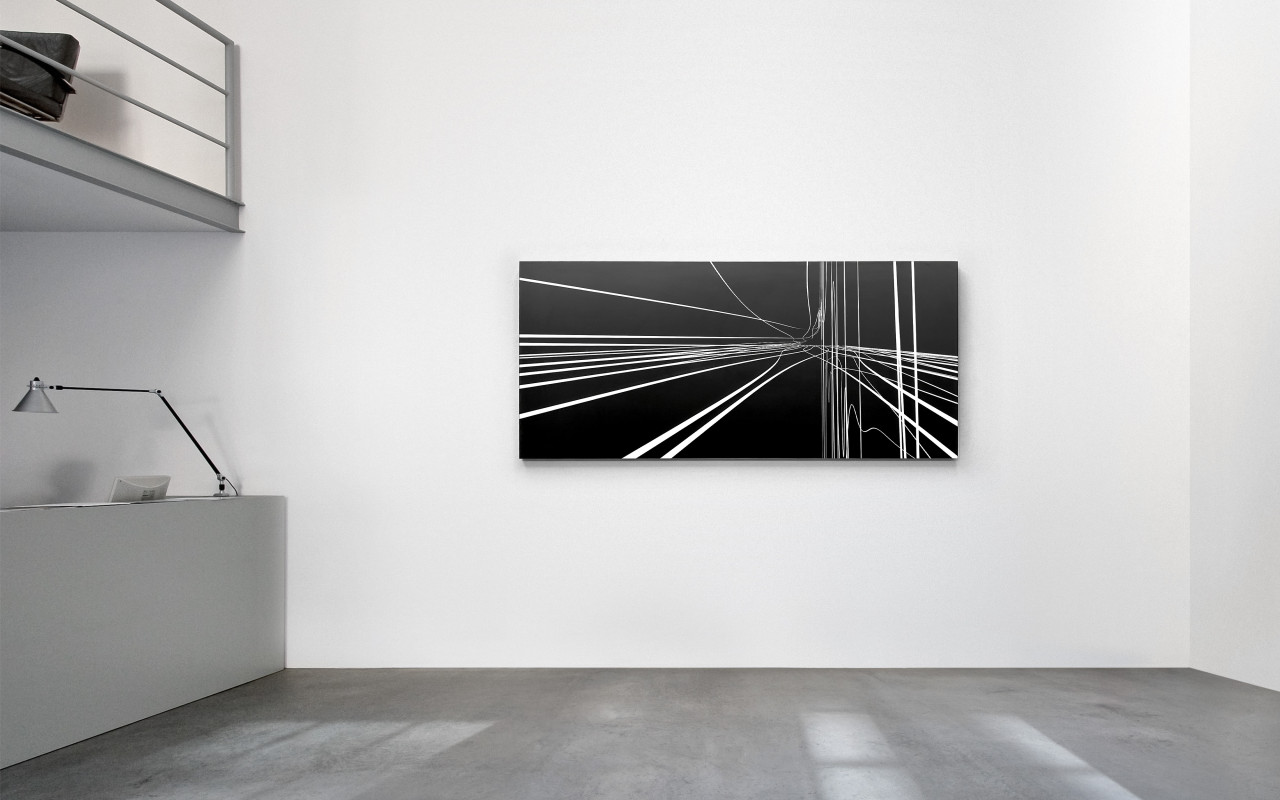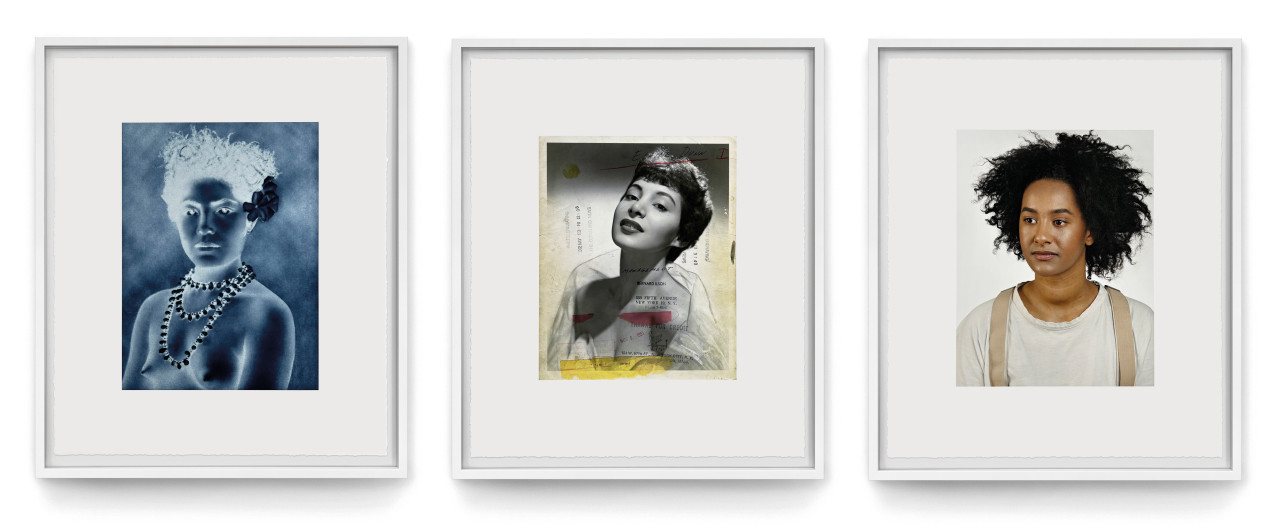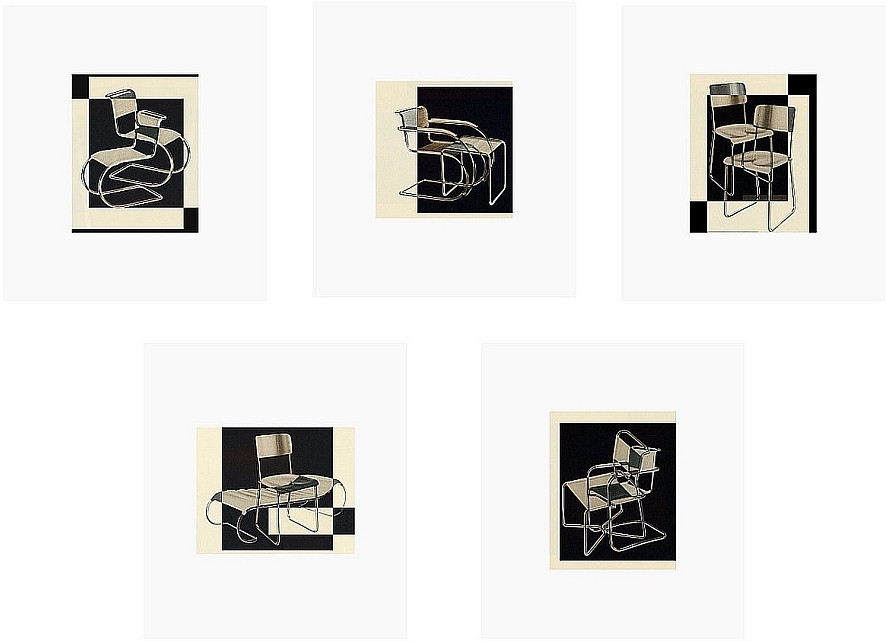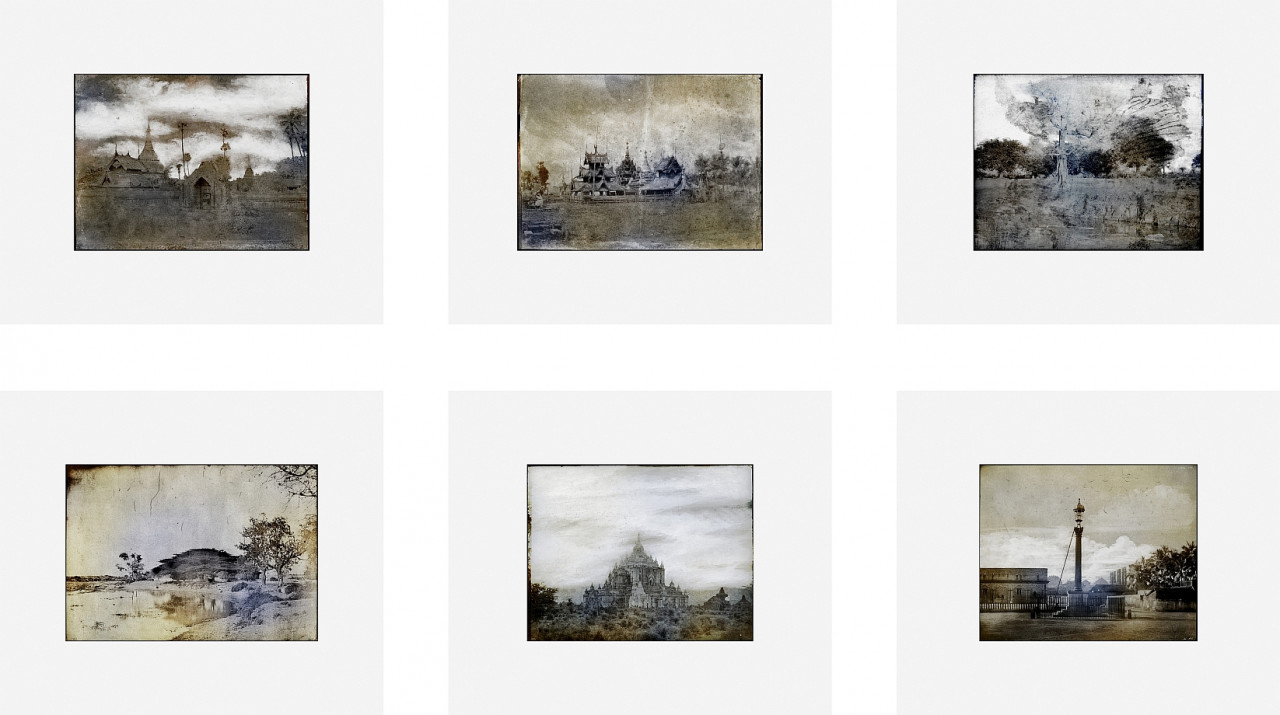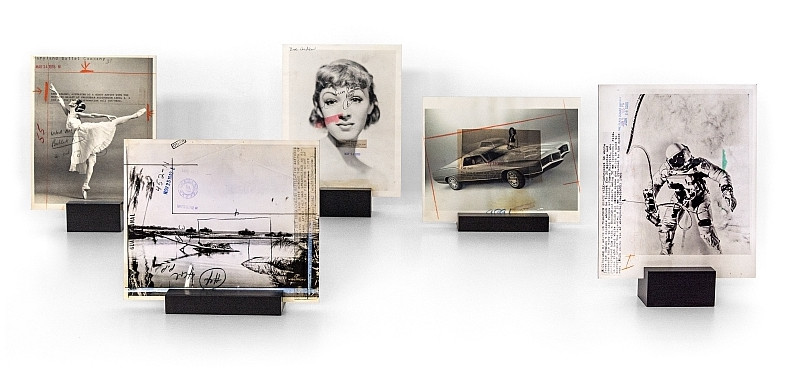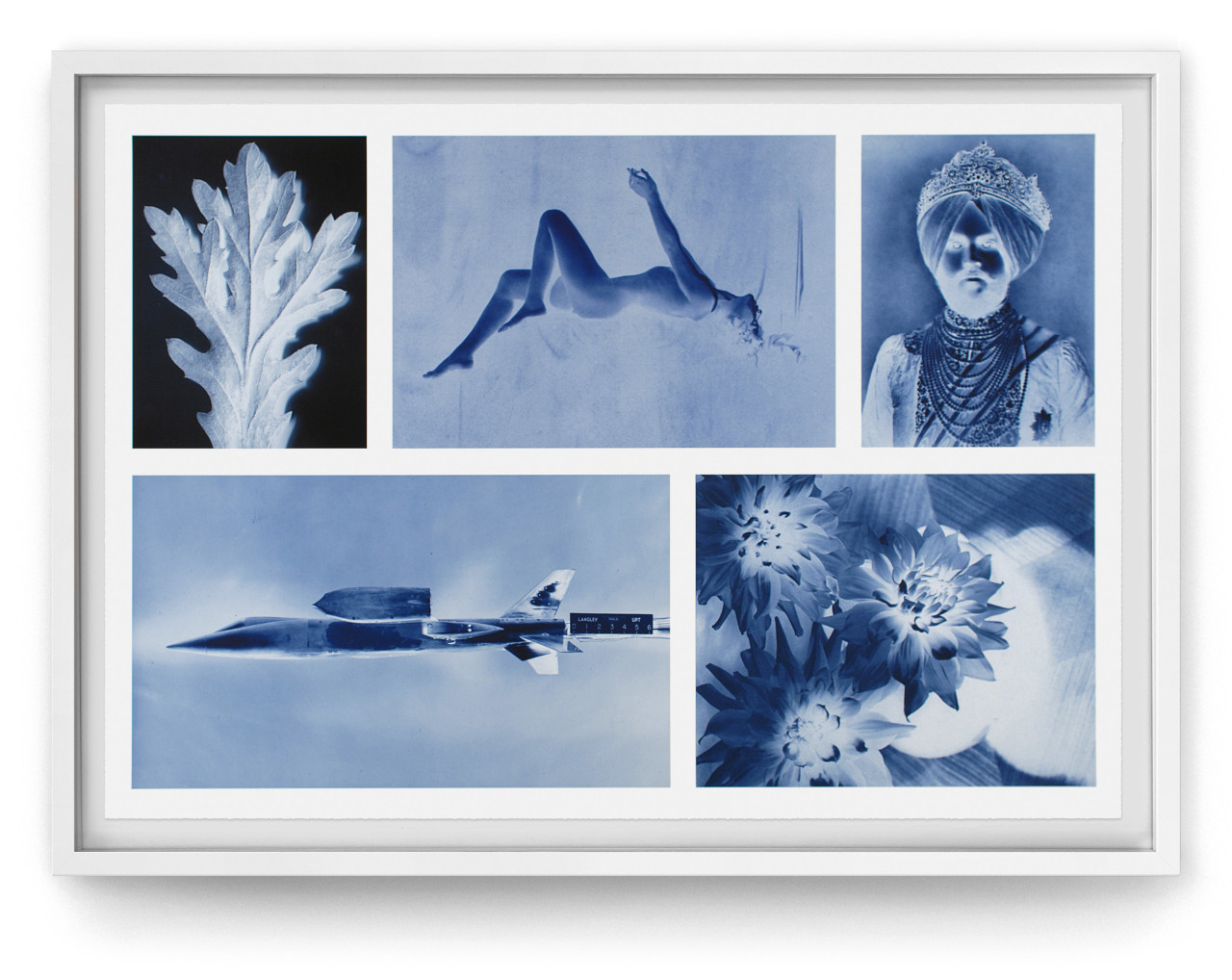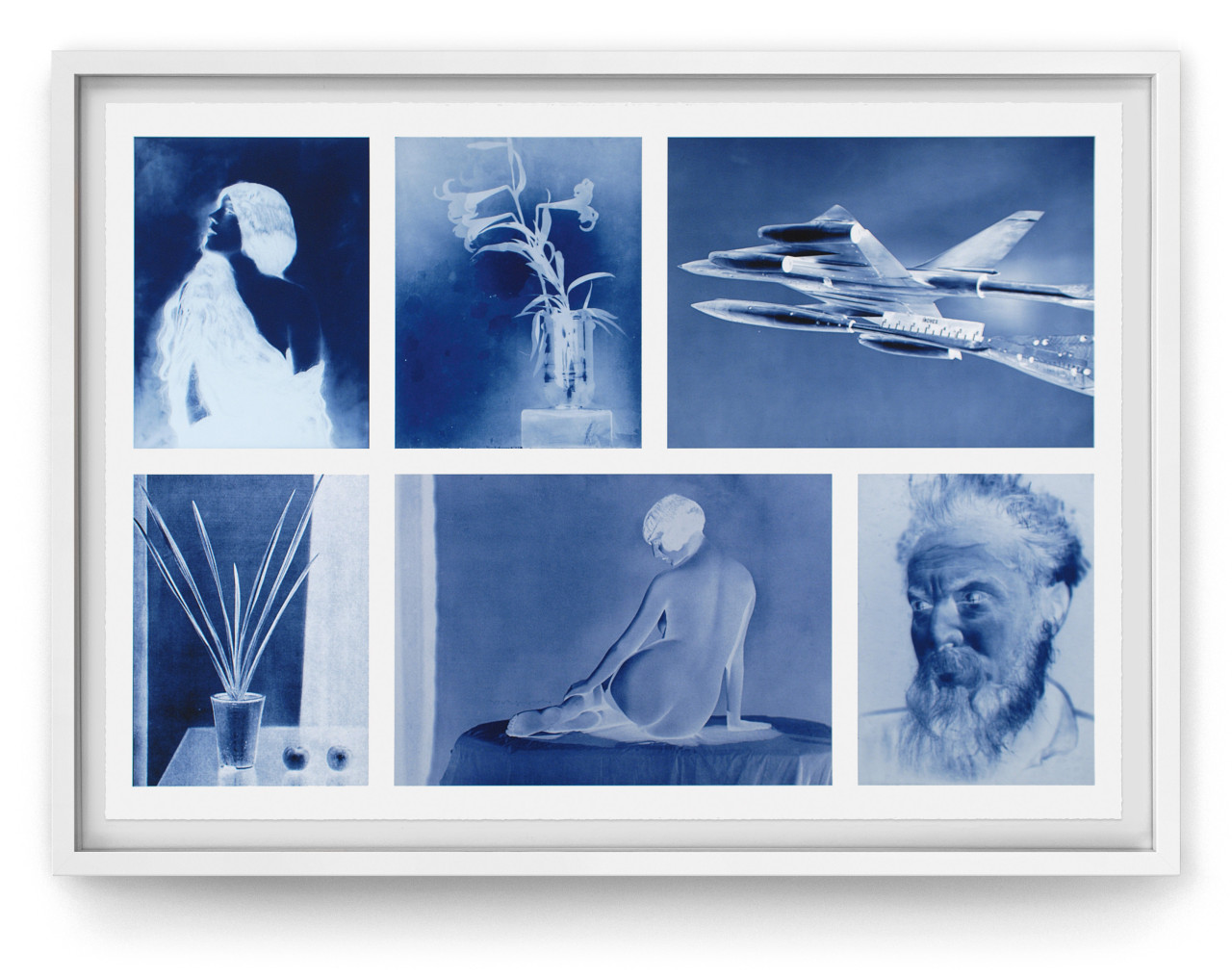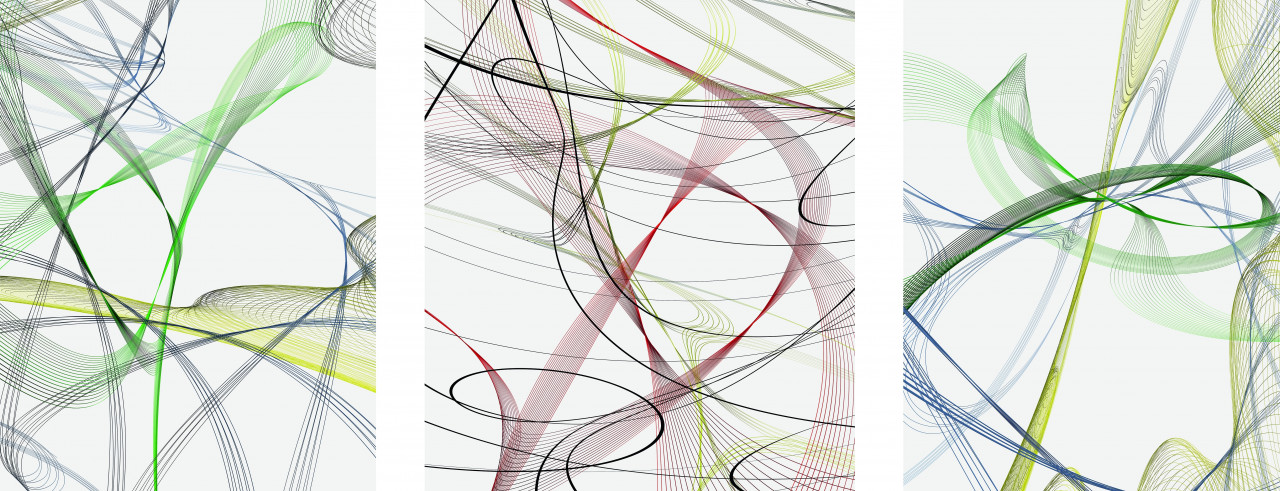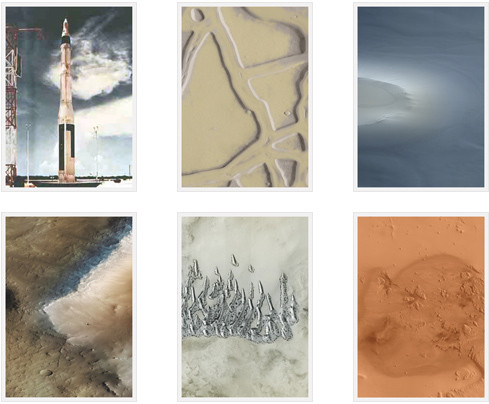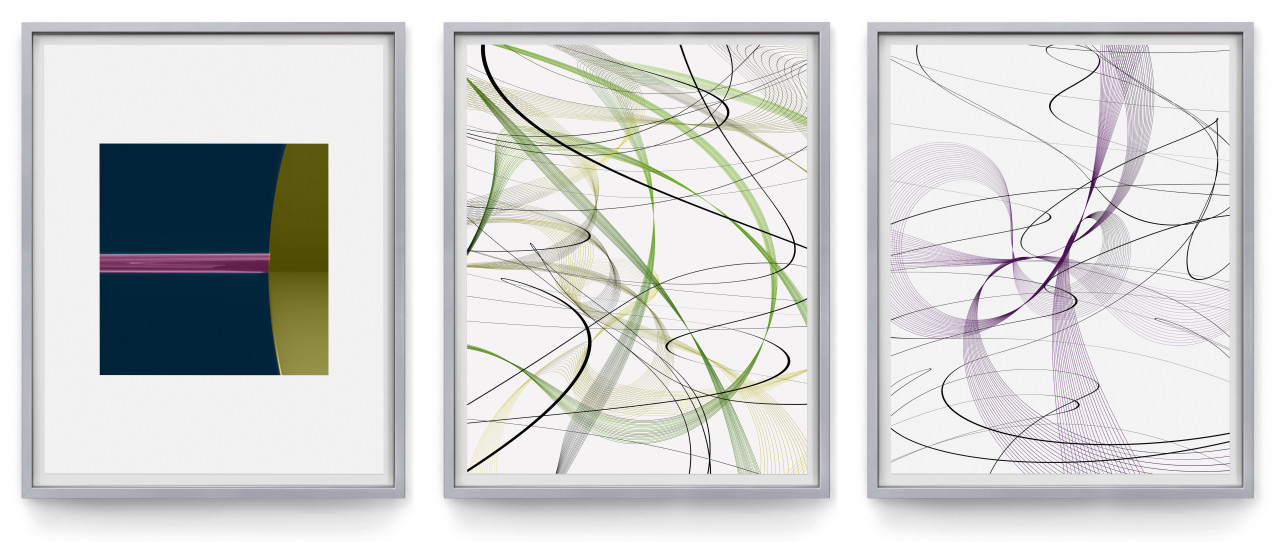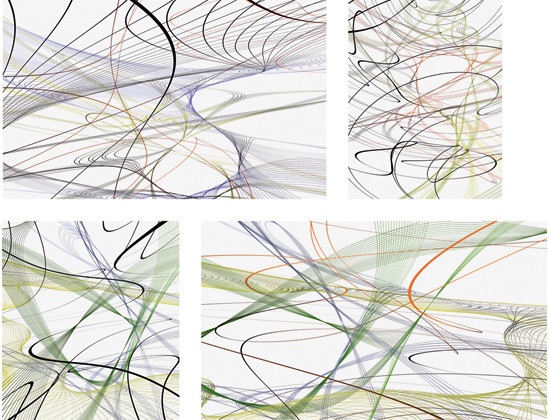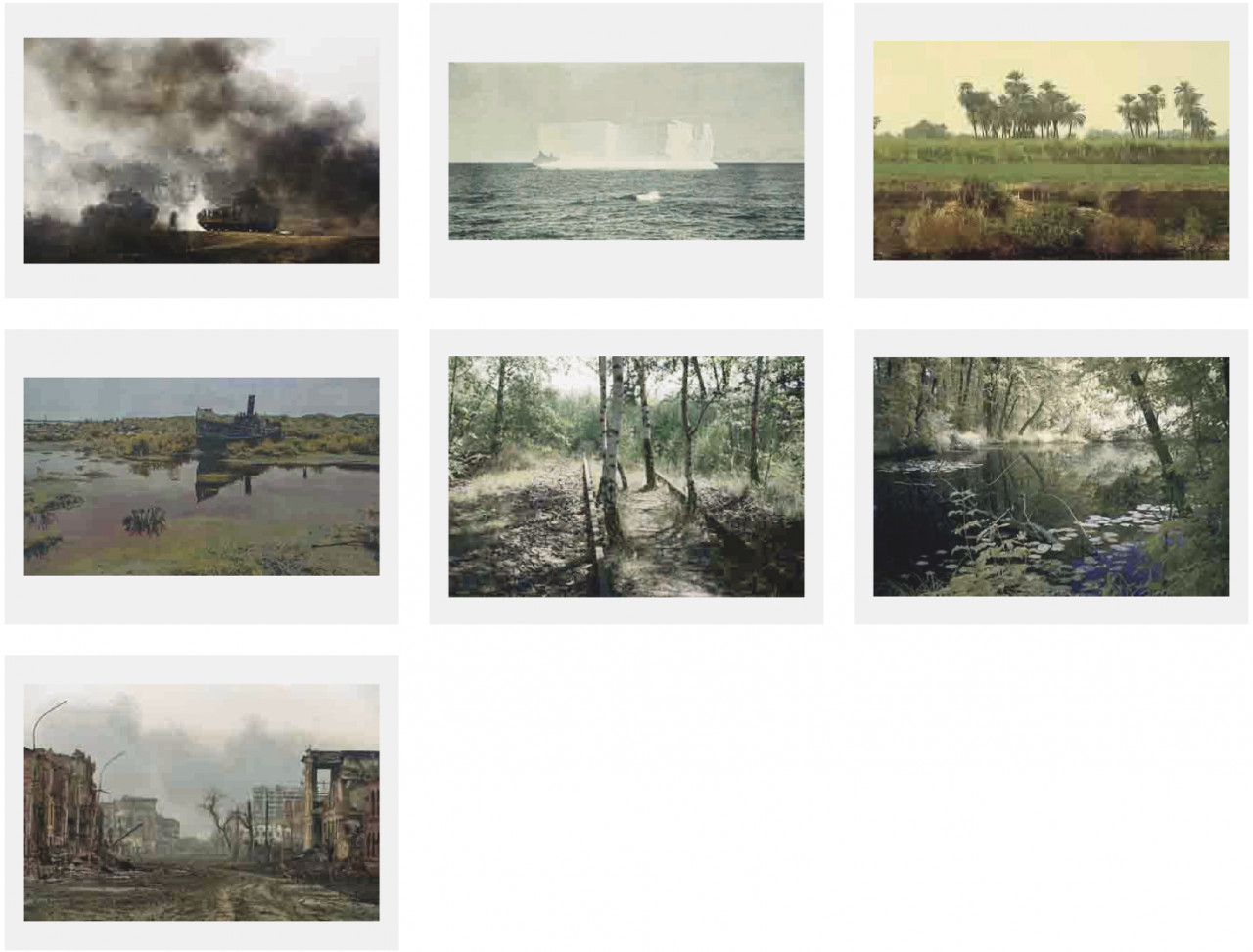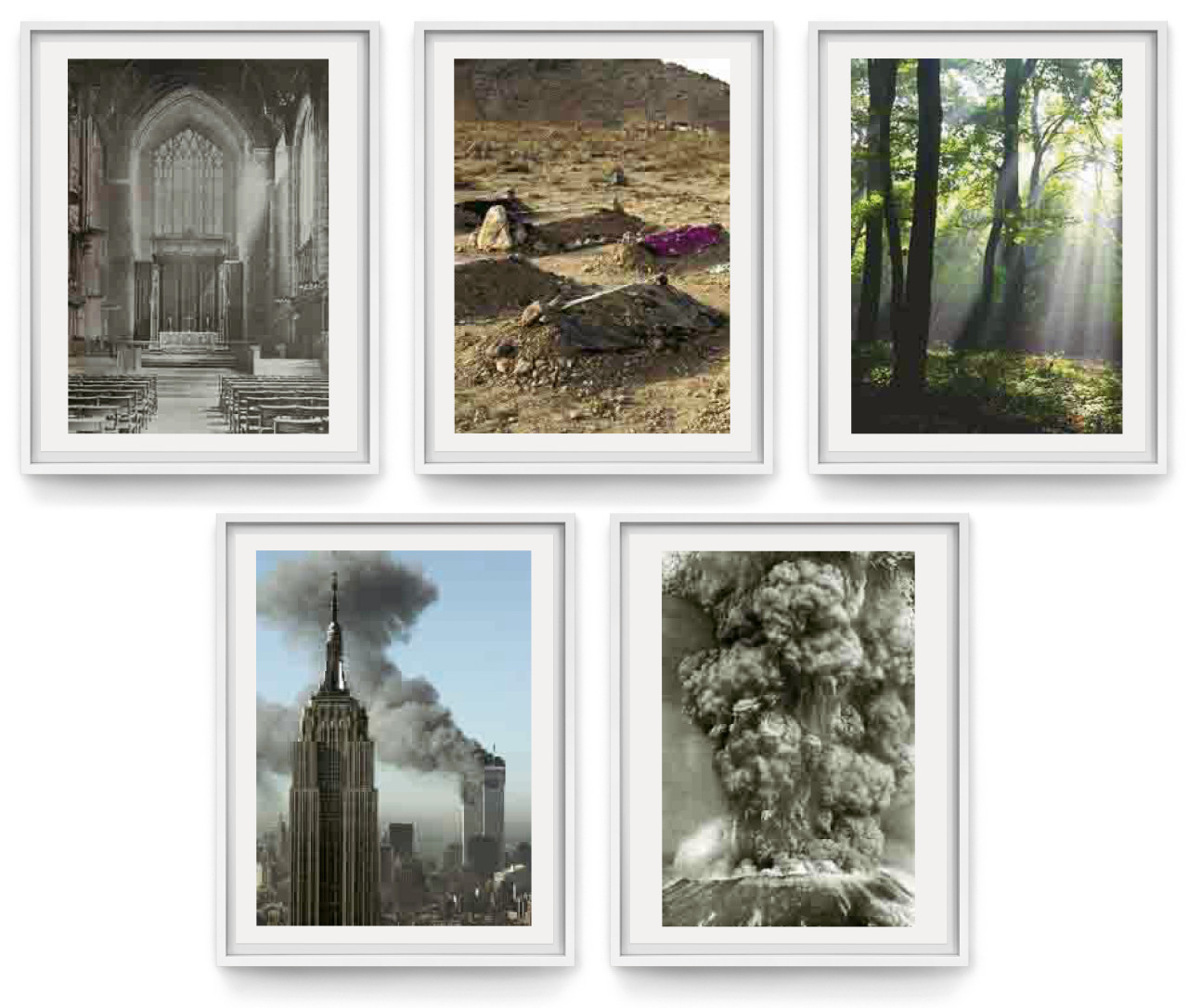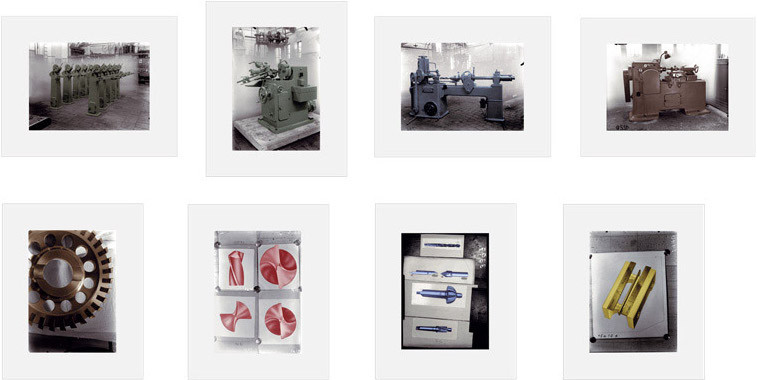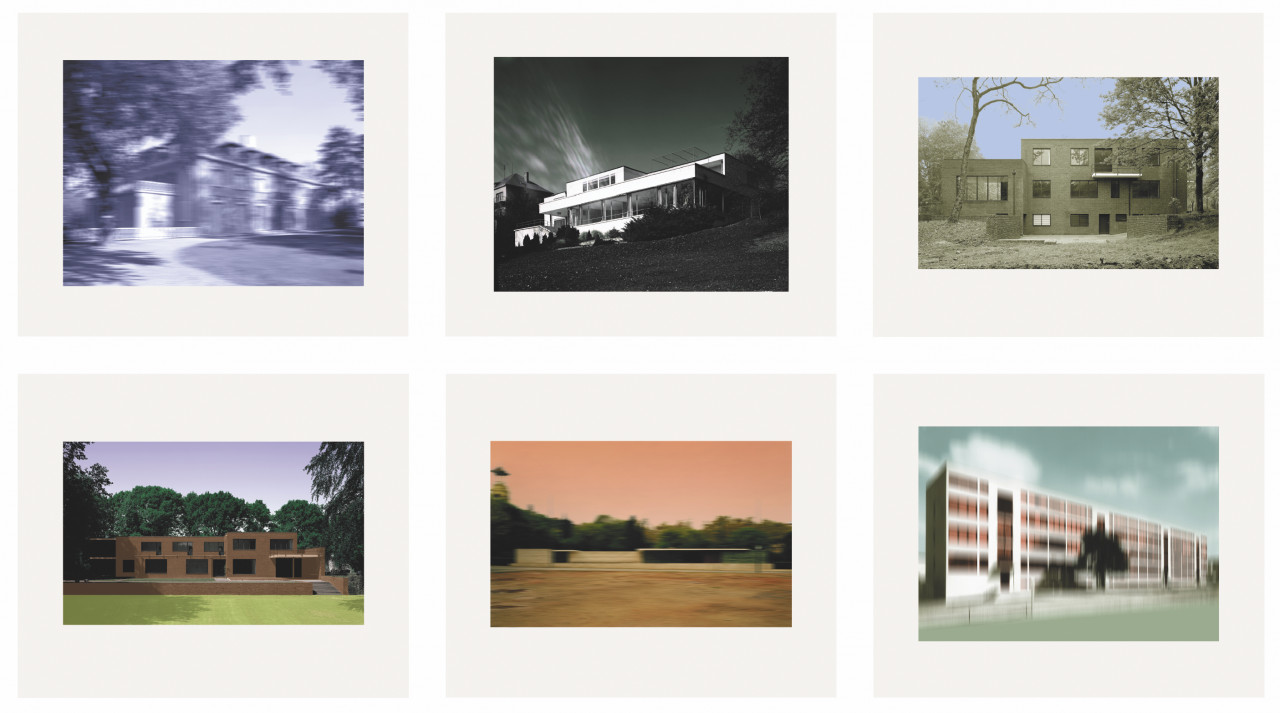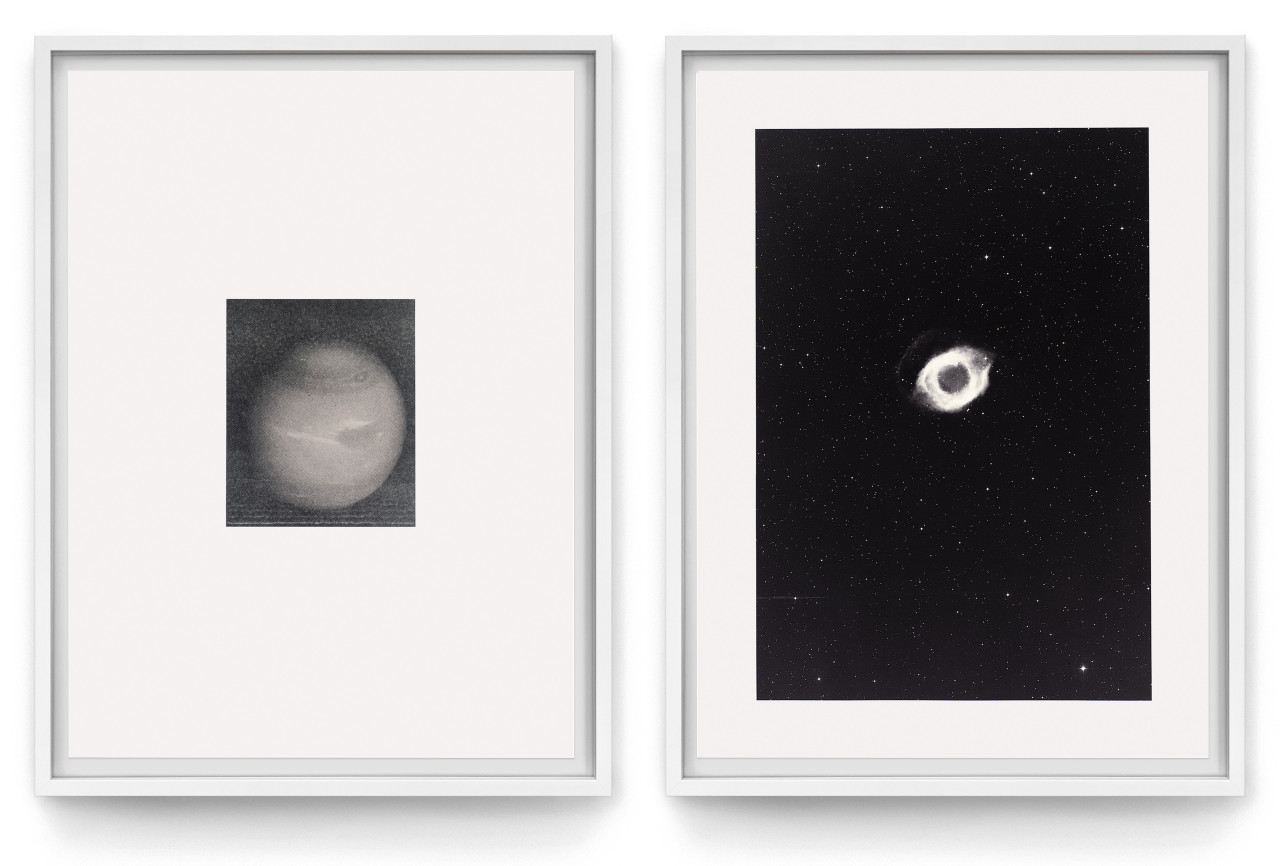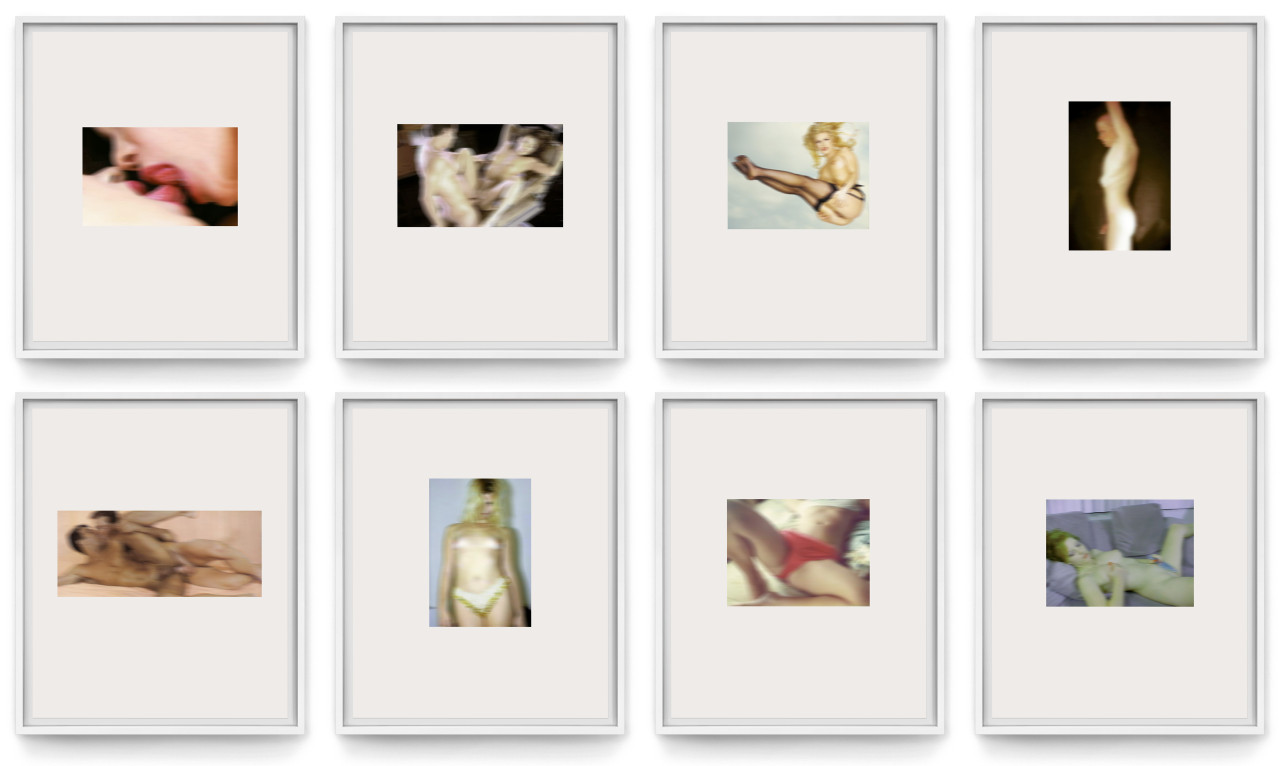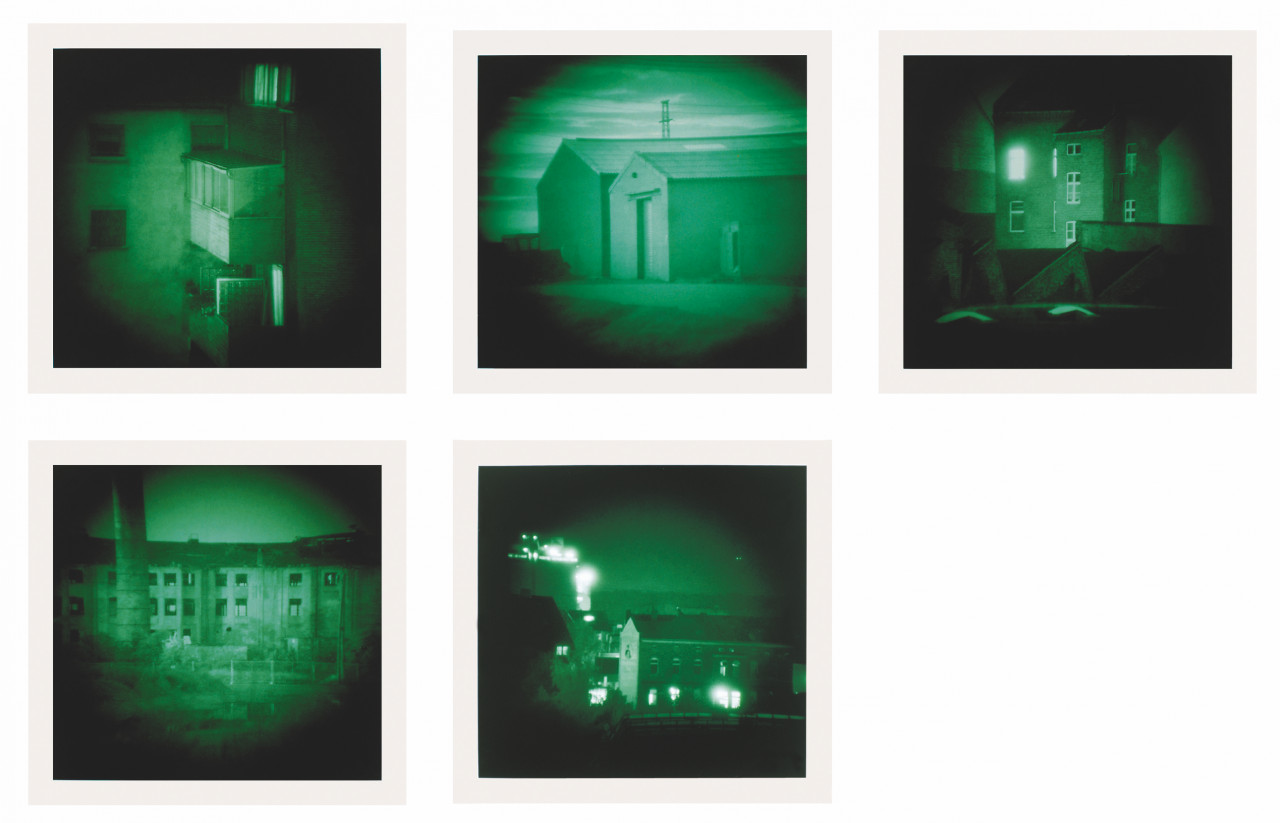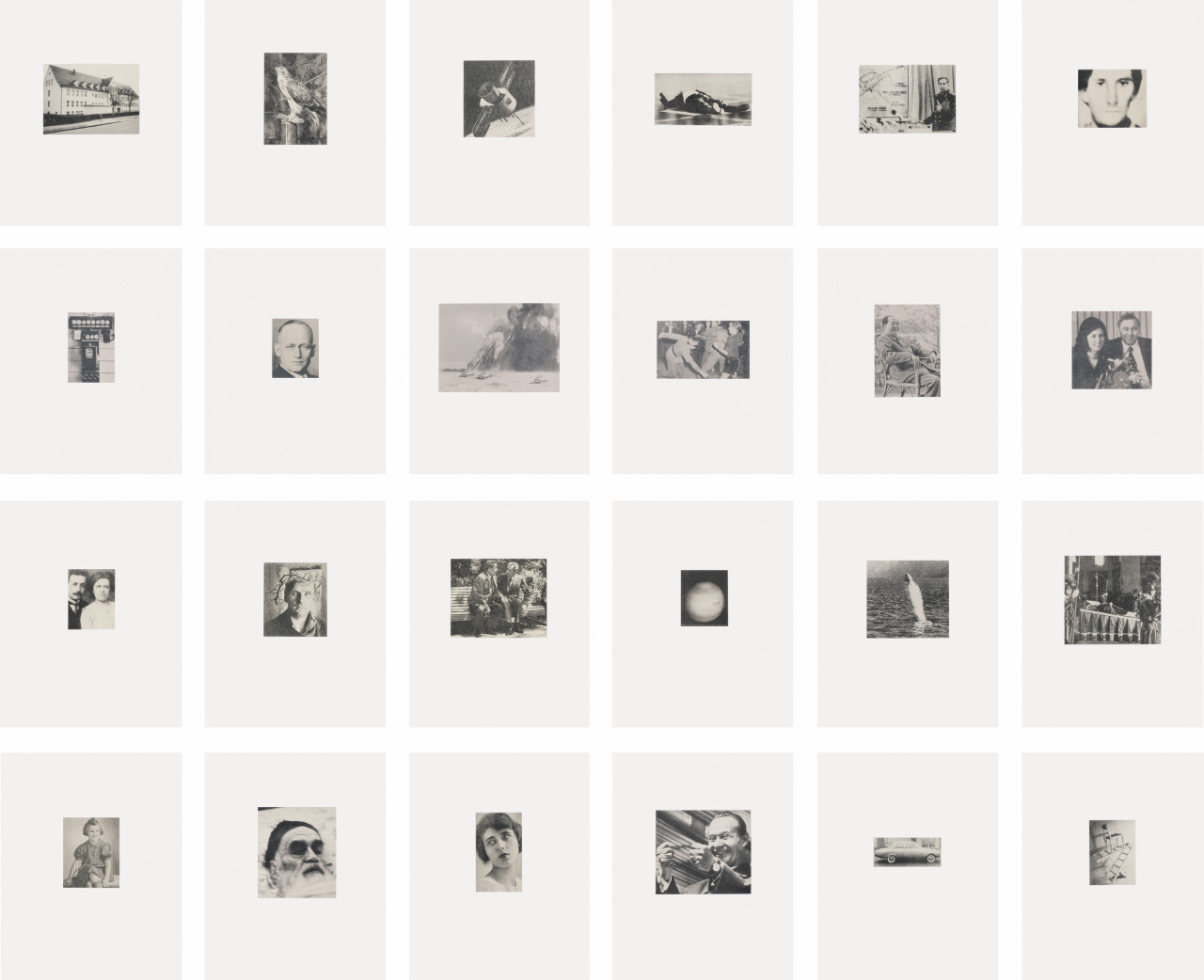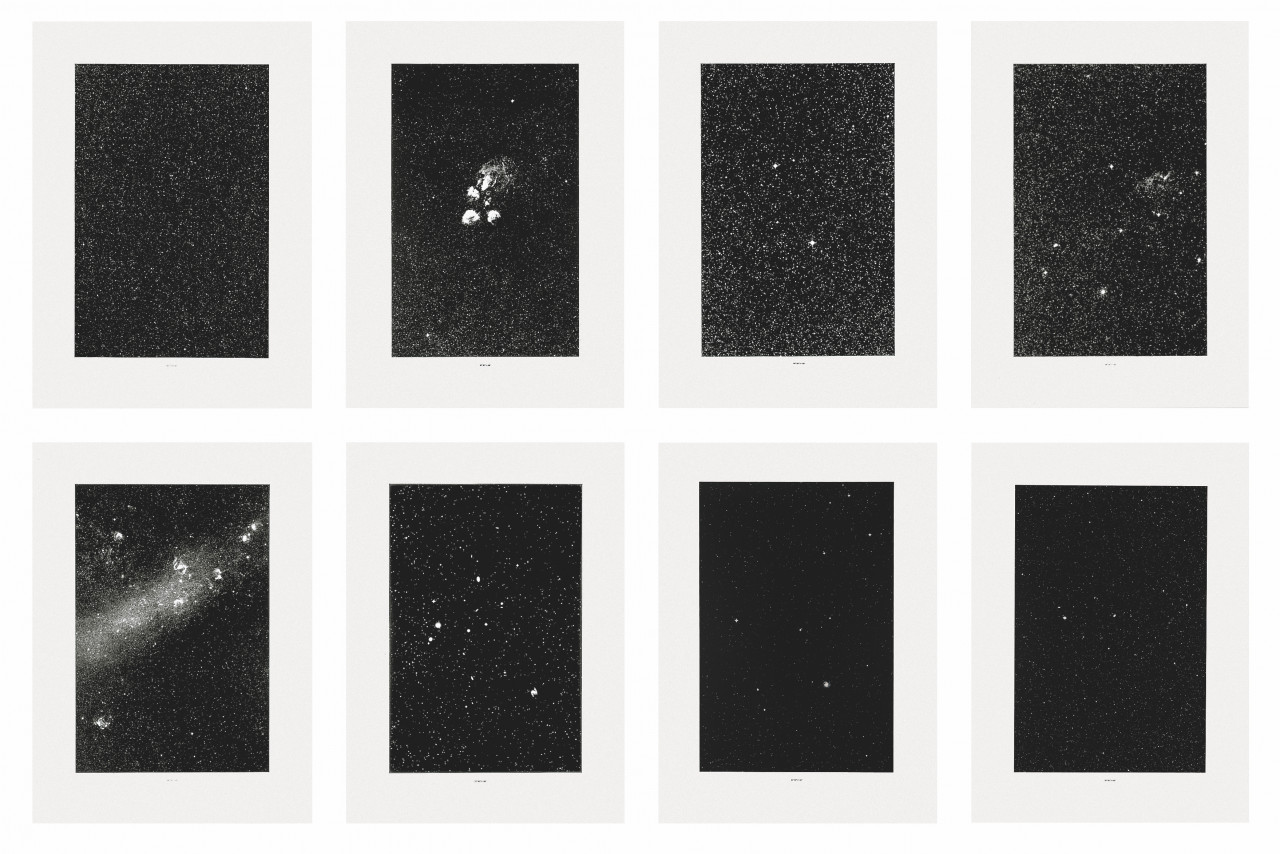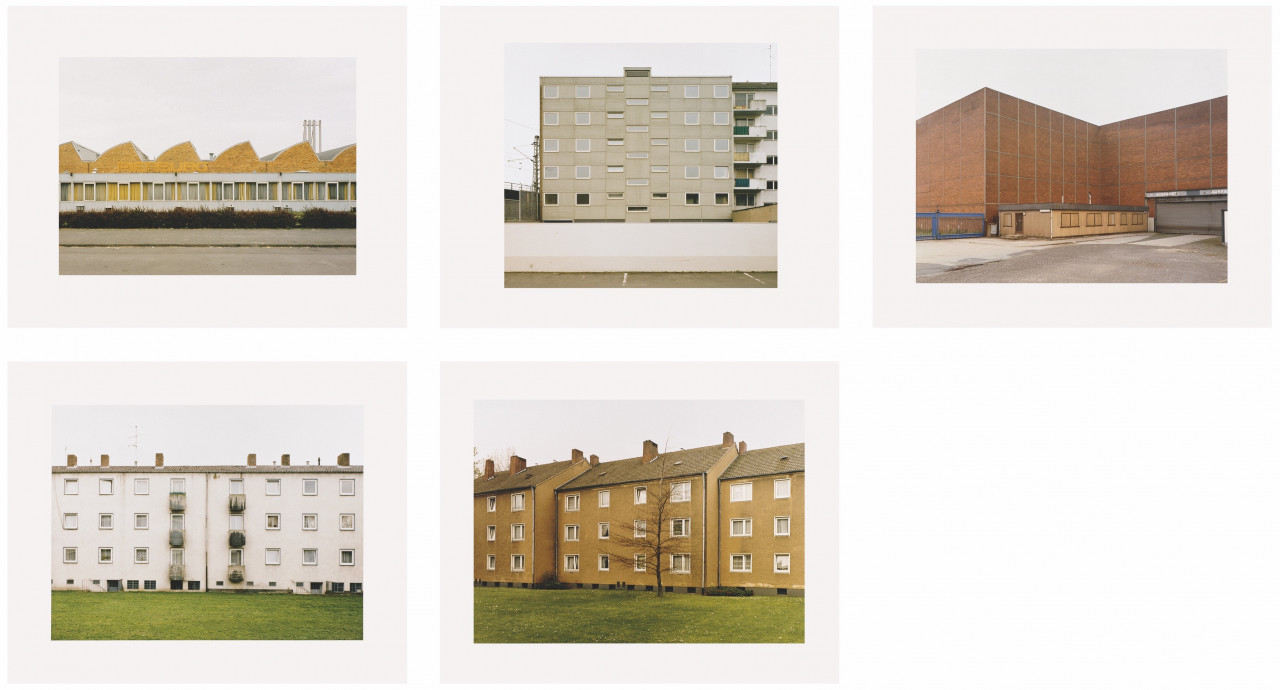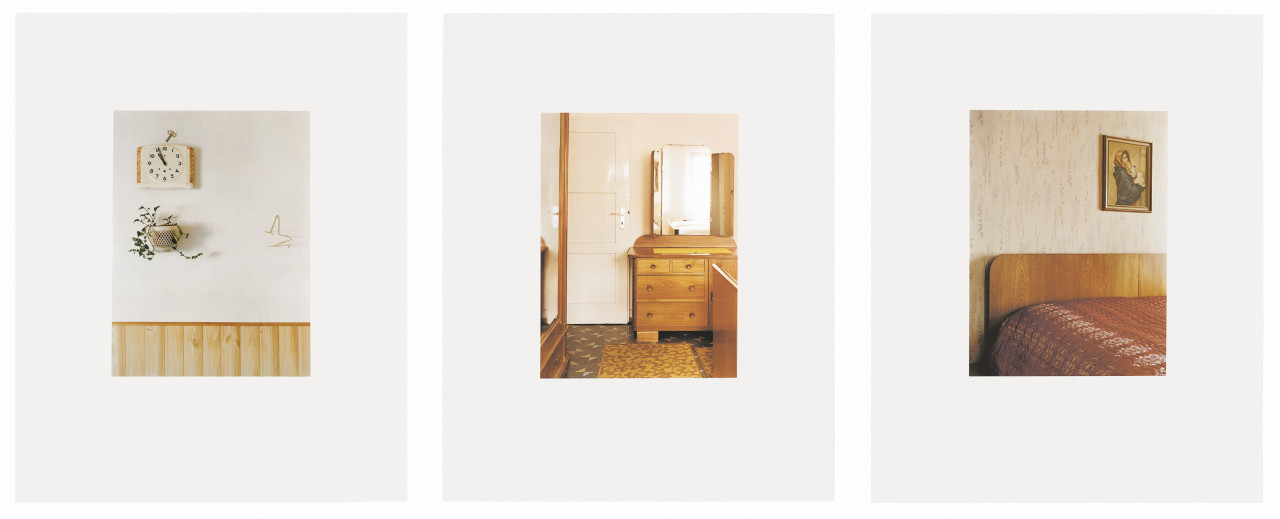Thomas Ruff
Thomas Ruff, born 1958 in Zell am Hamersbach, Germany, lives and works in Düsseldorf. The German photographer is renowned for his conceptual approach to the medium and his exploration of how images function in the digital age. Ruff studied under Bernd and Hilla Becher at the Kunstakademie Düsseldorf, yet departed from their documentary style to embrace a more experimental practice. His work spans a wide range of subjects and techniques – from deadpan portraits and pixelated internet imagery to digitally manipulated architectural photos and astronomical scans. Through seriality and appropriation, Ruff questions the truth-value of photography and reflects on the ways in which technological processes shape our perception of reality. Schellmann Art has been publishing Thomas Ruff’s editions since 1988. This long-standing collaboration has produced over 150 prints to date, as well as the artist’s catalogue raisonné, Thomas Ruff – Editions.
Thomas Ruff Editions
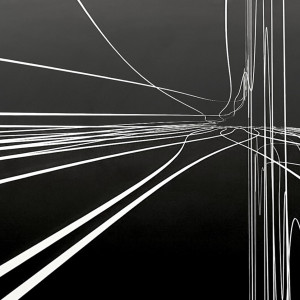
Zycle (Thonet)
2021/2025

Negative, press++, Portrait
2024
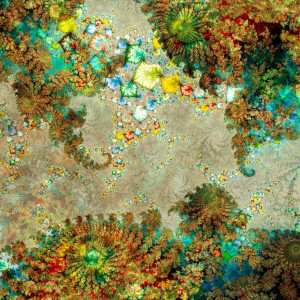
d.o.pe.
2022-2023

Thonet (set)
2019
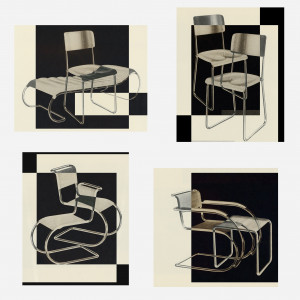
Thonet
2019
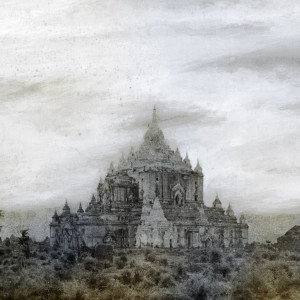
Tripe
2018/2019
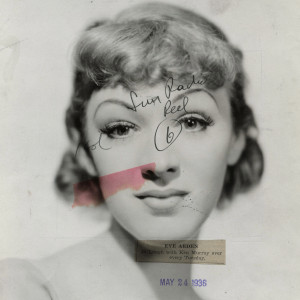
press++
2018
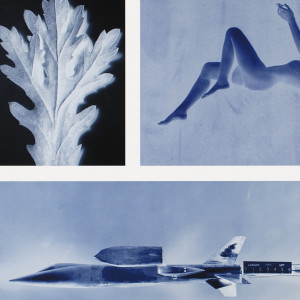
Negatives II
2016
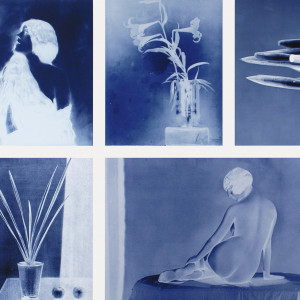
Negatives I
2016
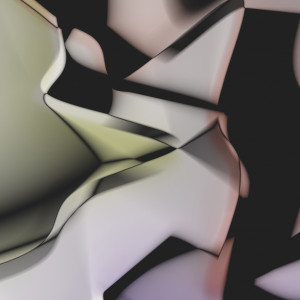
phg
2014
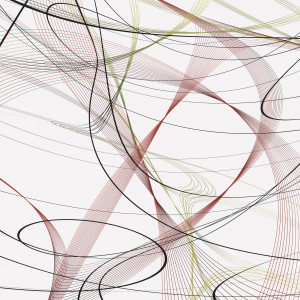
zycles II
2013
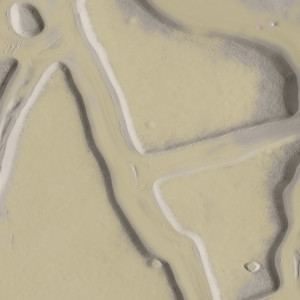
jpeg/ma.r.s.
2012
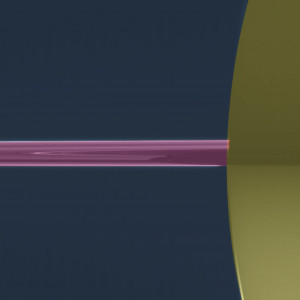
cassini/zycles
2010
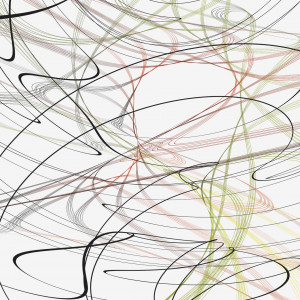
zycles
2009
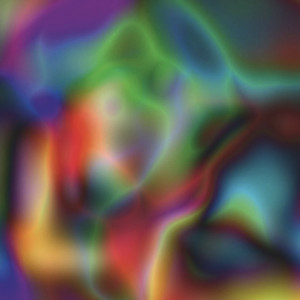
Substrate
2009
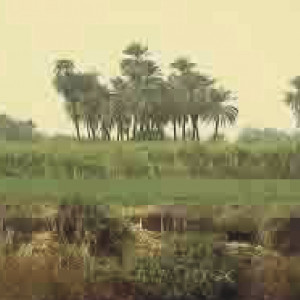
jpegs II
2008
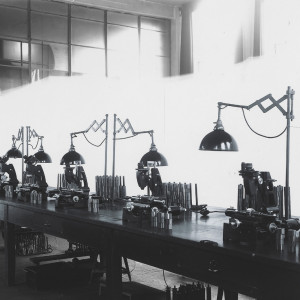
1410
2005
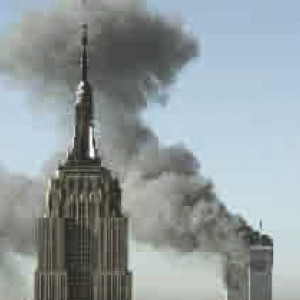
jpegs I
2005
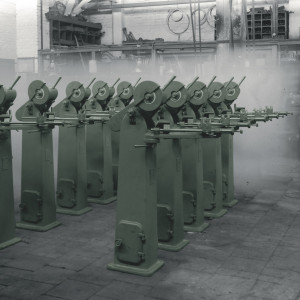
Maschinen
2005
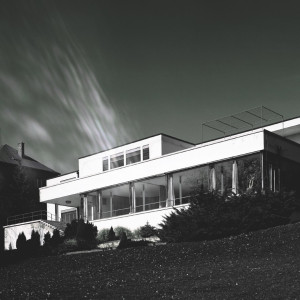
l.m.v.d.r.
2004
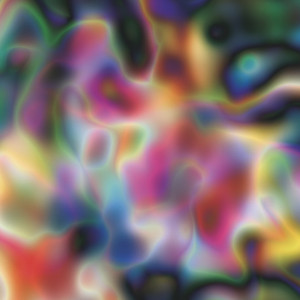
Substrate
2003
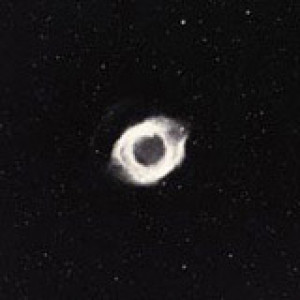
Zeitungsfoto 071, Sterne 22h 24m / -20
2002
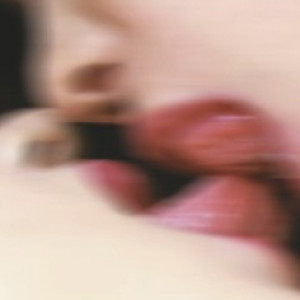
nudes
2001

Bronx I
1998
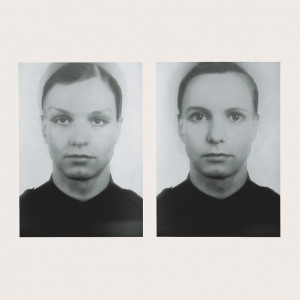
Andere Doppelporträts
1996
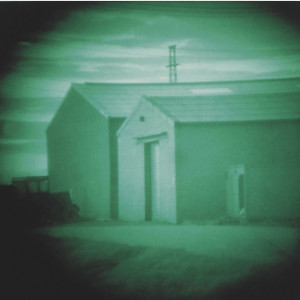
Nächte
1993
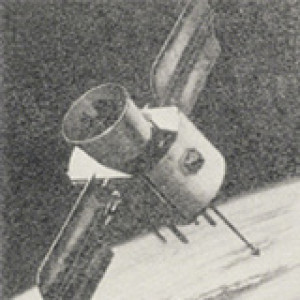
Zeitungsphotos
1991
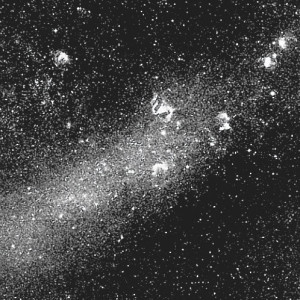
Sterne (Stars)
1990
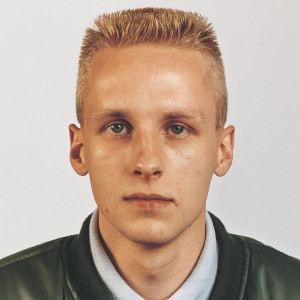
Portraits
1989
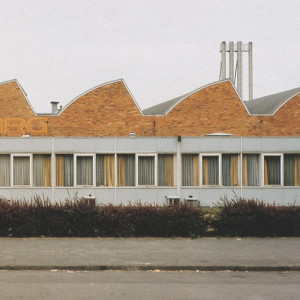
Häuser (Houses)
1989
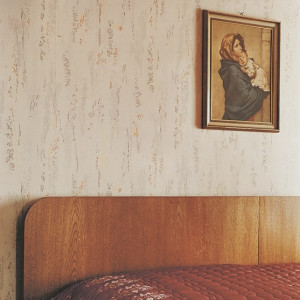
Interieurs (Interiors)
1988
Zycle (Thonet)
2021/2025
From Table Tableau
Laminate (HPL) on wooden board, 90 x 200 x 4 cm, to be used as a table top on trestles or hung on a wall. Two color versions: black on white or white on black. Total edition of 40 + 4 A.P., with a signature label affixed verso and a signed and numbered artist’s certificate.
Part of Thomas Ruff's zycles series, this edition transforms one of his computer-generated line compositions (based on illustrations of magnetism) into both a table top and a wall-based artwork. The work traces dynamic curves and intersections that suggest movement through an abstract, three-dimensional space. Executed in two inverse color versions, zycles reflects Ruff’s ongoing exploration of the relationship between technology, image construction, and perception – translating digital precision into a tangible, functional form.
EUR 8,000
Negative, press++, Portrait
2024
From FACES
Three digital pigment prints on Hahnemühle 300g rag paper, hand-torn, each 60 x 50 cm. Edition of 45 + 8 AP, each signed on label verso and numbered on the prints themselves.
These three print editions by Thomas Ruff each stem from distinct bodies of work, offering a visual dialogue on the evolving history of photographic portraiture. The selection reflects Ruff’s enduring interest in how identity is constructed, mediated, and perceived through the camera lens. On the left, a negative-style portrait references early ethnographic or studio portrait photography, inviting a critical look at colonial image-making and its aesthetic codes. The central image, based on a manipulated archival photo, blends analog texture with digital intervention – underscoring Ruff’s engagement with found imagery and the layering of meaning over time. The rightmost portrait, starkly contemporary in style and clarity, belongs to Ruff’s signature series of head-on color portraits, known for their neutral expressions and clinical precision. Together, these works span different eras, techniques, and contexts, showcasing Ruff’s conceptual approach and his deep exploration of photography as both document and construction.
Each EUR 1,800
Triptych EUR 5,000
d.o.pe.
2022-2023
Four digital archival pigment prints on Hahnemühle Photo Rag Ultrasmooth 305g/qm paper
Vertical works: 70 x 55 cm (27.5 x 21.7 in), horizontal work: 70 x 100 cm (27.5 x 39.5 in)
Edition of 40 + 5 AP, signed and numbered
Co-published by Schellmann Art and Utopia Editions
This edition is based on Thomas Ruff's d.o.pe. series, which was exhibited at David Zwirner New York in October 2022. Known for his exploration of the ever-changing possibilities of photography and his interest in visualised geometric structures (coined "fractal" by the mathematician Benoît Mandelbrot in 1975), Thomas Ruff used a specialised software programme to create fractal patterns which were then printed on industrial carpets for the exhibition, and on rag paper for the edition. The title of the series refers to Aldous Huxley’s autobiographical volume The Doors of Perception from 1954.
Set EUR 9,000
Vertical works EUR 2,200 each
Horizontal work EUR 3,300
Thonet (set)
2019
Created on the occasion of the 200th anniversary of the furniture company Thonet.
Five digital pigment prints on 500 g Hahnemühle Photo Rag paper, each 56 × 50 cm (22 x 19¾ in). Edition of 25, each signed and numbered.
For the two editions Thomas Ruff created for the 200th anniversary of iconic furniture company Thonet, he referenced images from Thonet catalogs of the 1920s and transformed them, using double exposures, into the design style of that era.
Set EUR 6,000
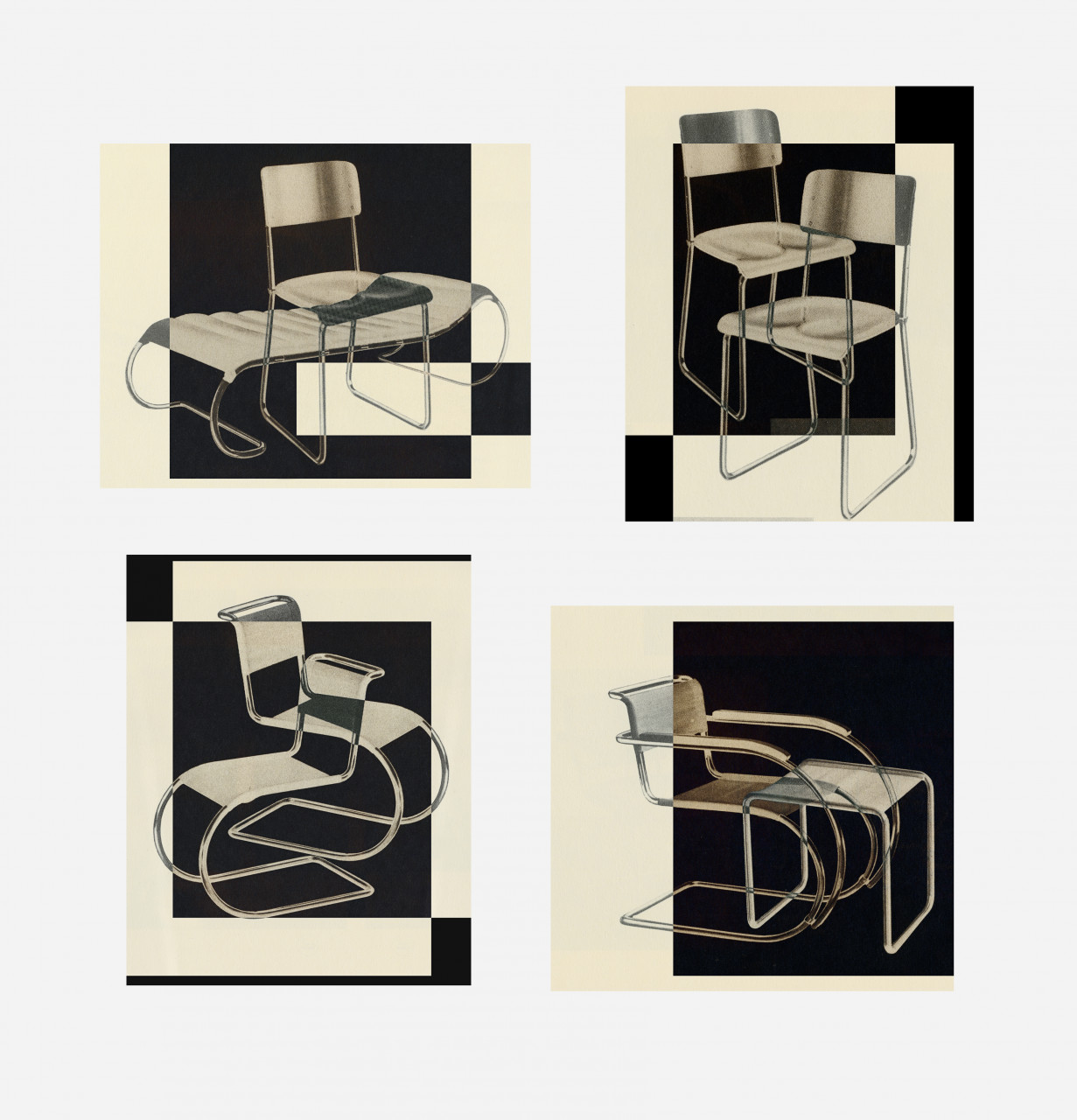
Thonet
2019
Created on the occasion of the 200th anniversary of the furniture company Thonet.
One digital pigment print (four images) on 500 g Hahnemühle Photo Rag paper, 78 × 75 cm (30¾ x 29½ in). Edition of 35, signed and numbered.
Both editions that Thomas Ruff created for the 200th anniversary of iconic furniture company Thonet reference images from Thonet catalogs of the 1920s, which the artist then transformed, using double exposures, into the design style of that era. This single print combines four of the images from his set of five into a single composition.
EUR 2,500
Tripe
2018/2019
Set of 6 digital pigment prints (Ditone) on Hahnemuehle Rag paper, each 55 x 65 cm (21¾ x 25½ in). Edition of 33, each signed and numbered on verso.
The Tripe edition series by Thomas Ruff is inspired by some of the earliest photographs of India and Myanmar, reimagining mid-19th-century architectural and topographical images by British Army captain and photographer Linnaeus Tripe. Ruff discovered Tripe’s retouched paper negatives in the collection of the Victoria and Albert Museum in London and used them as the basis for his contemporary reinterpretations.
Set EUR 9,000
press++
2018
Fujiflex, mounted on aluminum (Dibond). 24 images, different sizes from 21 x 23 to 21 x 30.8 cm (8¼ x 9 to 8¼ x 12 in). Edition of 15 each, signed and numbered on verso, on stand.
All images are available individually.
This edition accompanies Thomas Ruff’s body of work press++. The source materials for this series are mainly black-and-white press photographs from the 1930s to the 1980s, originating primarily from the archives of American newspapers and magazines. Ruff scanned both the front and back of the original documents, combining the partially edited photograph on the front with the texts, comments, and traces of use found on the reverse. Similar to his early 1990s series Newspaper Photographs, Thomas Ruff selected images that span the full spectrum of newspaper reportage – from politics and society to science, technology, culture, and fashion.
Negatives II
2016
Digital pigment print, on rag paper, 70 x 100 cm (25½ x 39½ in). Edition of 40, signed and numbered on verso.
Negatives II is the second edition, in which Thomas Ruff combined images from his Negatives series into a composition. As with the first, it brings together digitally inverted historical photographs – here featuring botanical studies, a reclining nude, a regal portrait, a fighter jet, and a floral still life. Ruff’s transformation of these archival images into cool, cyan-toned “digital negatives” invites viewers to reconsider the photographic negative as an autonomous visual form. By merging scientific, artistic, and ethnographic imagery, the composition highlights the breadth of photography’s historical applications – while foregrounding the material qualities and overlooked aesthetic of the negative itself.
EUR 2,500
Negatives I
2016
Digital pigment print on rag paper, 70 x 100 cm (25½ x 39½ in). Edition of 40, signed and numbered on verso.
This edition by Thomas Ruff is one of two compositions made from images of his Negatives series, in which he explores the visual and conceptual potential of the photographic negative. Composed of six digitally inverted historical photographs, the edition brings together diverse subjects – from portraiture and the nude to still life and technology – highlighting the broad scope of Ruff’s engagement with analog source material. Since 2014, Ruff has been digitally reworking albumin prints from the 19th and early 20th centuries, transforming them into striking blue-toned “digital negatives”. In doing so, he draws attention to the negative as a rarely considered object of aesthetic value – once merely a means to an end, now reclaimed as a visual artifact in its own right.
EUR 2,500
phg
2014
Five chromogenic color prints, mounted on aluminum board (Dibond), each 74 x 58 cm (29 x 23 in). Edition of 40, each signed and numbered on verso.
This edition, a suite of five prints, belongs to Thomas Ruff’s phg series, in which he reimagines the early 20th-century photogram using 21st-century tools. Inspired by the camera-less experiments of the 1920s, Ruff created his own virtual darkroom, where he simulated the exposure of objects – such as lenses, rods, spirals, and paper forms – onto a digital surface. By manipulating these 3D-generated shapes and adding controlled lighting, including color, he produced complex compositions that echo the abstract aesthetics of historical photograms while embracing the possibilities of digital imaging. The result is a striking fusion of photographic history and contemporary technology, expanding the language of light-based image-making.
Set EUR 9,000
zycles II
2013
Set of three digital pigment prints (Ditone) on semi-transparent polyester foil; left and right image 100 x 76.7 cm each, center image 100 x 80 cm (39½ x 30¼ or 39½ x 31½ in). Edition of 15, each signed and numbered.
With this edition, which is part of his zycles series, Thomas Ruff transforms mathematical precision into visual poetry. Inspired by 19th-century engravings of magnetic fields – particularly those in the writings of physicist James Clerk Maxwell – Ruff used 3D modeling software to visualize complex cycloid curves derived from linear algebra. The resulting structures, composed of flowing, interwoven lines, evoke associations with abstract drawing, minimalism, planetary orbits, or sound waves. While rooted in mathematical logic, these images transcend their origins to become delicate, dynamic compositions full of rhythm and spatial tension.
jpeg/ma.r.s.
2012
Portfolio of six C-prints, each 84 x 60 cm (33 x 23¾ in). Edition of 40, each signed and numbered.
Combining works from two of Thomas Ruff’s series, this edition explores the transformation of photographic imagery in the digital age through a portfolio of six prints.
In the jpeg series, to which the first of these prints belongs, Ruff enlarges compressed internet images and reveals the blocky pixel structures usually seen as flaws. By emphasizing these artifacts, he turns mass media images into abstract compositions that challenge our perception of digital photography. For his ma.r.s. series, Ruff worked with high-resolution satellite photos of Mars taken by NASA. Through digital editing – altering perspective and adding color – he transforms scientific data into striking, almost familiar landscapes that blur the line between documentation and imagination. Together, the prints reflect Ruff’s ongoing interest in how technology shapes what – and how – we see.
Set EUR 9,000
cassini/zycles
2010
Set of 3 digital pigment prints (Ditone) on photo rag paper, 85 x 68 cm (33½ x 26¾ in) each. Edition of 30, each signed and numbered on verso.
This edition highlights Thomas Ruff’s engagement with scientific imagery and mathematical abstraction. The first work, from his cassini series, is based on photographs of Saturn and its moons taken by NASA’s Cassini space probe. By digitally reworking the original files – altering color and scale – Ruff enhances their abstract qualities, transforming raw scientific data into contemplative, otherworldly compositions. The other two works belong to zycles, a series inspired by 19th-century illustrations of electromagnetic fields. Using a 3D modeling program and mathematical cycloid curves, Ruff generates intricate line structures in virtual space. These compositions, while mathematically precise, evoke organic and poetic forms – suggesting planetary orbits, musical vibrations, or minimalist drawings. Together, the three prints bridge science and art, turning data and formulae into visually rich, conceptually layered images.
Set EUR 6,000
zycles
2009
Set of four digital pigment prints (Ditone) on semi-transparent polyester foil, 70 x 122, 70 x 114, 70 x 62 and 70 x 54 cm (27½ x 48, 27½ x 45, 27½ x 24½ and 27½ x 21 in). Edition of 15, each signed and numbered.
The four prints of this edition belong to Thomas Ruff’s zycles series – an exploration of mathematically generated line structures inspired by 19th-century illustrations of electromagnetic fields. Using a 3D modeling program and complex cycloid curves, Ruff creates dynamic virtual compositions that merge scientific logic with visual elegance. The flowing, intersecting lines evoke planetary orbits, vibrations, and minimalist drawing, demonstrating Ruff’s ability to translate abstract data into poetic visual forms. Varying in size and format, the prints emphasize the spatial and rhythmic qualities of these digitally rendered “drawings in space.”
Substrate
2009
From Forty Are Better Than One
8-part leporello, digital pigment print (Ditone) on 260 g Hahnemühle Baryta paper, 32 x 200 cm (12½ x 78¾ in). Edition: 75, signed and numbered.
A continuation of Thomas Ruff’s celebrated Substrates series, this edition assembles six images that dissolve narrative into layered color and light – transforming digital imagery into pure aesthetic experience. For Substrates, Ruff draws from internet-sourced comic images, layering and multiplying them through digital processing until they lose all narrative coherence. What remains are vibrant fields of swirling color and light, detached from clear meaning yet rich in visual impact. Thus, Ruff investigates the nature of contemporary visual culture, where virtual images are no longer representations of reality but autonomous aesthetic signals – abstract, seductive, and fundamentally ambiguous.
jpegs II
2008
Portfolio of 7 digital pigment prints (Ditone) on photo paper, 90 x 120 cm (35½ x 47¼ in). Edition of 45, signed and numbered.
This portfolio edition of seven prints is part of Thomas Ruff’s jpegs series, in which the artist explores the aesthetics and structure of compressed digital imagery. Sourced from the internet, each image – whether depicting war, nature, or ruins – has been enlarged to the point where the JPEG compression artifacts become visible, transforming the photographic surface into a grid of abstract pixel blocks. By embracing these digital distortions, Ruff invites viewers to reflect on the fragility of photographic truth in the age of mass media, turning familiar scenes into painterly, pixelated meditations on how we process and perceive images today.
Set EUR 11,000
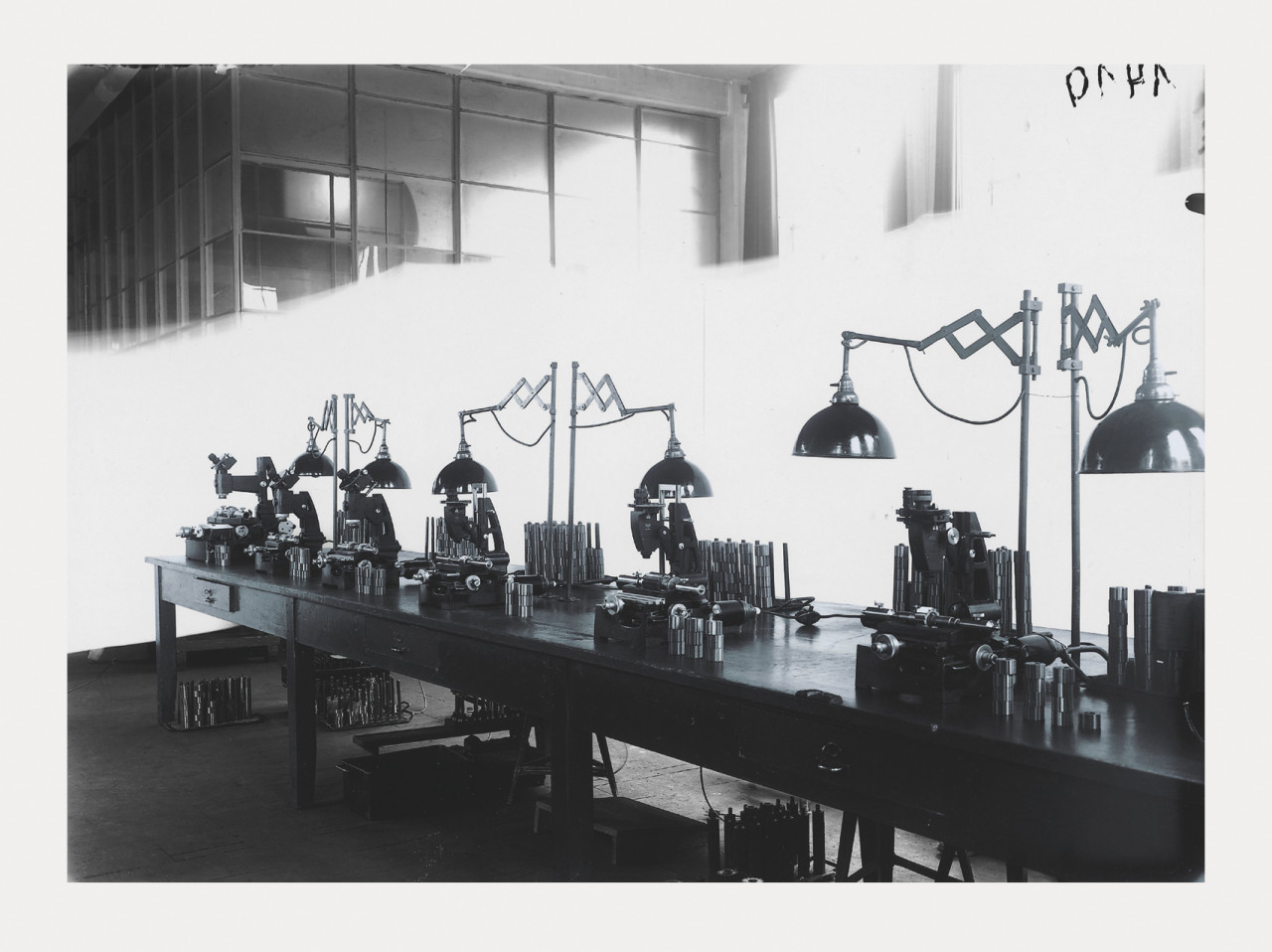
1410
2005
Published for the 51st Venice Biennale
Lambda C-print, 45 x 60 cm (17¾ x 23¾ in). Edition of 60, signed and numbered.
The print edition 1410 is part of Thomas Ruff’s Machines series, a collection of works created using digitized glass negatives from the 1930s. Originally produced for an industrial catalog by the Düsseldorf-based firm Rohde & Dörrenberg, the images documented machine parts with precision and clarity. Ruff reworked these archival photographs –digitally enhancing and recoloring specific areas to highlight the manual retouching techniques once used in analog printing. The result is a subtle layering of past and present image-making processes. Echoing the typological approach of his former mentors, Bernd and Hilla Becher, Ruff turns these utilitarian images into complex reflections on perception, reproduction, and the visual language of industry.
EUR 1,800
jpegs I
2005
Set of 5 digital pigment prints (Ditone) on photo paper, 120 x 90 cm (47¼ x 35½ in) each. Edition of 45, each signed and numbered on verso.
For this edition, Thomas Ruff chose five motifs from his jpegs series – an exploration of the pixelated surface of compressed digital images. Sourced from the internet, the images range from serene forest scenes and sacred spaces to moments of destruction and historical trauma. Ruff enlarges each file to the point where the JPEG compression becomes visible, turning the digital “errors” into a painterly grid of abstract blocks. By doing so, he exposes the fragility of visual information in the digital age and invites a deeper reflection on how we consume, process, and emotionally respond to images in a world saturated with media.
Set EUR 13,000
Maschinen
2005
Set of 8 digital pigment prints on photo rag paper, 50 x 40 (15¾ x 19¾ in) and 40 x 50 cm (19¾ x 15¾ in), respectively. Edition of 30, each signed and numbered.
Part of Thomas Ruff’s Machines series, this edition portfolio presents eight reworked photographs based on archival glass negatives from the 1930s. Originally produced by the Düsseldorf-based firm Rohde & Dörrenberg to document industrial machinery for catalogues, the images were functional in nature. Ruff digitally retouched and selectively colored these historical black-and-white photographs, drawing attention to the manual editing techniques once used in analog print preparation. By doing so, he transforms utilitarian documentation into contemplative works that reflect on visual reproduction, the legacy of industrial aesthetics, and the evolving relationship between photography and technology.
Set EUR 7,500
l.m.v.d.r.
2004
Set of 6 C-prints mounted on aluminum (Dibond), 58 x 70 cm (23 x 27½ in), each signed and numbered. Edition of 40, in aluminum box.
This edition of six prints is part of Thomas Ruff’s l.m.v.d.r. series, a body of work dedicated to the architecture of Ludwig Mies van der Rohe. Originally commissioned in 1998 for an exhibition marking the renovation of Haus Lange and Haus Esters in Krefeld – two villas designed by van der Rohe – Ruff developed his own visual language to photograph and reinterpret the architect’s early European buildings. Using both newly taken photographs and archival material, Ruff digitally manipulated the images with altered color, focus, and contrast, creating atmospheric, almost cinematic views. Rather than offering traditional architectural documentation, the series explores the emotional and conceptual impact of modernist design through the lens of contemporary image-making.
Substrate
2003
Suite of 4 Ditone prints on 250 g satin paper, mounted on aluminum board (Dibond), each print 100 x 75 cm (39½ x 29½ in), signed and numbered. Edition of 45.
Substrates, the edition accompanying Thomas Ruff’s eponymous series of works, is a vibrant exploration of digital image culture stripped of narrative content. Using comic book imagery sourced from the internet, Ruff digitally layered and multiplied fragments until the original motifs dissolved into swirling, luminous fields of color and form. The resulting compositions are immersive and abstract – pure surface and sensation – reflecting Ruff’s interest in how digital images function today more as aesthetic stimuli than representations of reality. Substrates offers a visual language for the excess, ambiguity, and allure of the virtual image world.
Zeitungsfoto 071, Sterne 22h 24m / -20
2002
From Double Exposure
Two C-prints, mounted on Forex, 59 x 42 cm (23¼ x 16½ in) each. Edition of 45, signed on both images.
In this diptych edition, Thomas Ruff combines two motifs from outer space. The left-hand image stems from his newspaper photographs series, a project in which Ruff collected and reprinted press images from German-language newspapers. Removed from their original context and enlarged to double-column width, these everyday visuals – once chosen for editorial, not aesthetic reasons – become enigmatic fragments of a collective visual memory. The right-hand image comes from the Stars series, for which Ruff worked with archival negatives from the European Southern Observatory. Rather than photographing the night sky himself, he appropriated scientific data to create stark, minimal compositions of stars, nebulae, and galactic formations. Though both images depict outer space, they reflect very different visual systems – one shaped by mass media and the circulation of images on Earth, the other by scientific observation and data from deep space.
Set EUR 2,000
nudes
2001
Set of 8 Iris prints on rag paper, each print 75 x 60 cm (29½ x 23½ in), each signed and numbered on verso. Edition of 50.
This edition of eight prints belongs to Thomas Ruff’s nudes series, a provocative exploration of digital erotic imagery drawn from the internet. Starting in the late 1990s, Ruff began collecting low-resolution pornographic images from online “thumbnail galleries,” attracted by their pixelated structure and compressed digital aesthetic. He enlarged and digitally altered the images – adjusting color, softening focus, and removing graphic detail—to transform explicit content into something painterly and ambiguous. The resulting works blur the boundary between pornography and art, inviting viewers to reflect on the visual codes, desires, and conventions that shape our digital image culture.
Set EUR 15,000
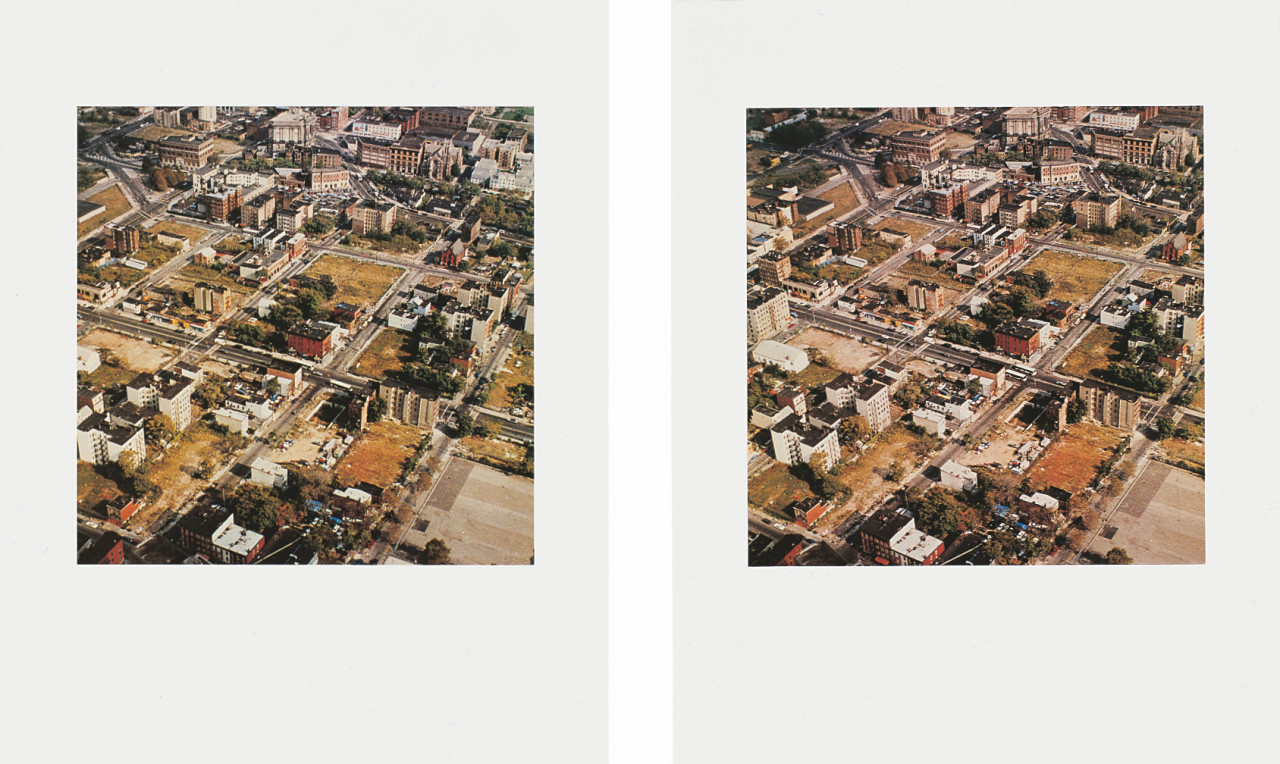
Bronx I
1998
From Sequences
Two grano lithographs on Fabriano rag paper. Each print 50 x 40 cm (19¾ x 15¾ in), each signed and titled, edition of 60.
The edition Bronx I consists of two prints from Thomas Ruff’s stereo-photos series, an exploration of stereoscopic photography as a tool for heightened visual perception. The series reflects Ruff’s interest in how seeing is shaped not just by the eye, but by the brain’s processing of spatial information. By presenting two nearly identical aerial images of the Bronx, Ruff mimics the left and right-eye perspective that underpins 3D vision. When viewed through a stereoscopic device, the images merge into a single, immersive three-dimensional scene – transforming documentary urban photography into an almost physical experience of place. With this series, Ruff blurs the boundaries between image, perception, and presence.
Set EUR 900
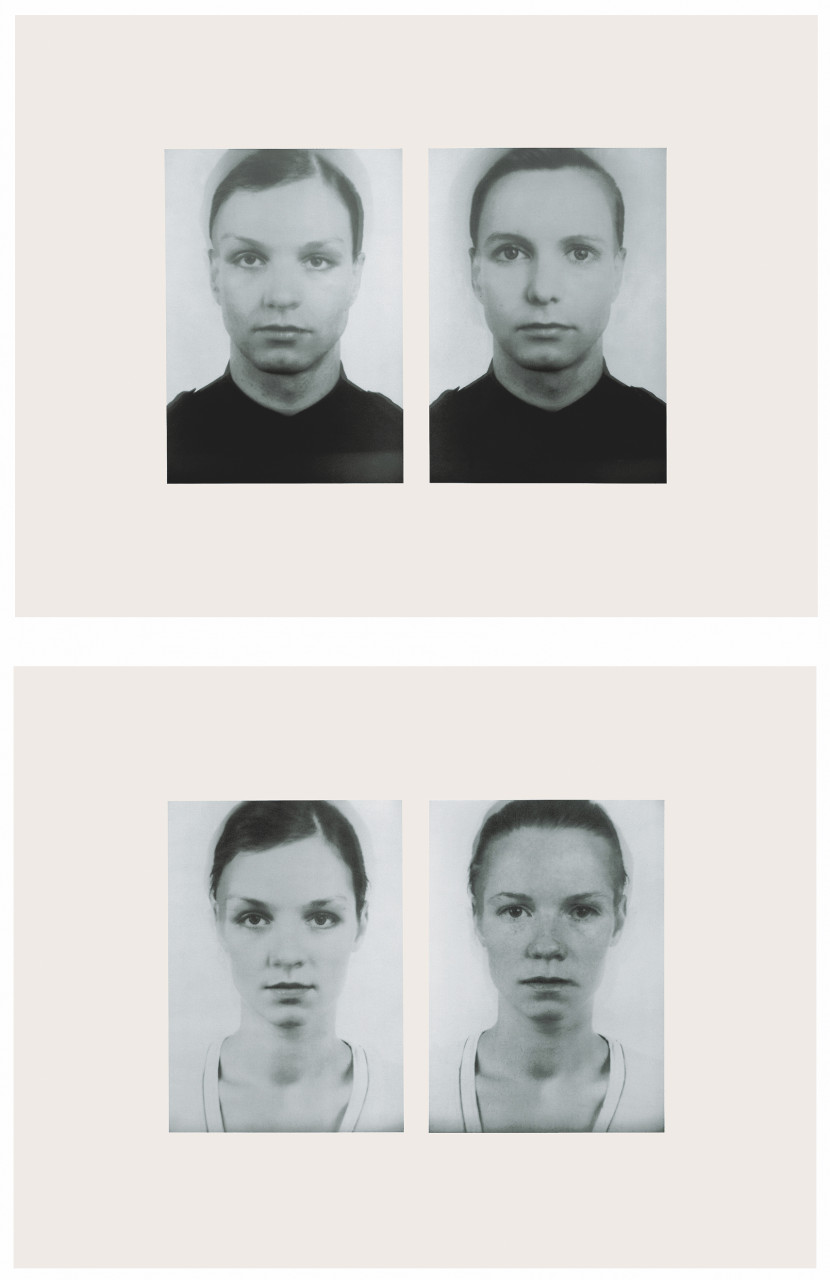
Andere Doppelporträts
1996
2 silkscreens, each print 72 x 104 cm (28 x 40 in), each signed and numbered. Edition of 40 + X + 10 A.P.
For this edition, Thomas Ruff placed two slightly different versions of the same portrait from his series Other Portraits next to each other to create a double. With this series, Ruff expanded his long-standing engagement with portrait photography by combining two faces into a single composite image. Created using a Minolta Montage Unit – an optical device once employed by German police in the 1970s to generate identikit images – these works merge elements from different portraits into a hybrid likeness. Unlike Ruff’s earlier, neutral single portraits that emphasized surface over expression, these double portraits introduce a constructed identity: plausible but fictitious. Rather than manipulating the images digitally or through darkroom techniques, Ruff creates these new faces entirely in-camera. With Andere Doppelporträts (Other Double Portraits), Ruff continues his inquiry into the boundaries between photographic truth, perception, and invention – interrogating not only how we read faces, but how photographic tools shape what we see.
Set EUR 1,800
Nächte
1993
Set of 5 grano lithographs, each print 71 x 74 cm (28 x 29 in), each signed and numbered on verso. Edition of 45.
Part of Thomas Ruff’s Nächte (Nights) series, this edition of five prints is based on photographs created using a night vision device originally developed for military use. Triggered by televised night footage of the Gulf War in the early 1990s, Ruff became intrigued by the eerie green glow of light intensifier technology and its capacity to render the invisible visible. Equipping his own camera with such a device, he began photographing backyards, buildings, and street scenes in and around Düsseldorf, later extending his nocturnal explorations to other urban environments. The resulting images – drenched in ghostly monochrome green – evoke a sense of surveillance, unease, and cinematic mystery. With Nächte (Nights), Ruff shifts his attention from the documentary to the technological, examining how tools of vision affect what, and how, we see.
Set EUR 7,500
Zeitungsphotos
1991
Portfolio of 24 offset/silkscreen prints, 50 x 40 cm (19½ x 16 in) each. Edition of 36, signed and numbered on verso on five prints of the portfolio.
This edition portfolio of 24 prints forms part of Thomas Ruff’s Zeitungsfotos (newspaper photographs) series. Sourced from German-language newspapers, the images span politics, culture, science, war, celebrity, and everyday life – reflecting the collective visual memory of a specific era. Originally chosen by editors to illustrate the news rather than for artistic value, Ruff recontextualizes these found photographs by isolating them from text and enlarging them to double-column width. Presented without captions or context, the images lose their journalistic function and become ambiguous, free-floating fragments. Ruff’s intervention shifts the viewer’s attention to surface, tone, and composition – questioning how we read and assign meaning to media imagery in an age defined by visual saturation.
Portfolio EUR 4,500
Sterne (Stars)
1990
Portfolio with eight grano-lithographs on Ikonorex 300g card stock, varnished, 89.5 x 65 cm (35¼ x 25½ in). Edition of 40, each signed and numbered on verso.
The eight prints of this edition belong to Thomas Ruff’s Stars series, in which the artist appropriates astronomical negatives from the European Southern Observatory to create stark, contemplative images of the night sky. Rather than photographing celestial bodies himself, Ruff selected and cropped sections from scientific star maps, recontextualizing them as minimalist compositions. The dense fields of white dots on black evoke both wonder and detachment, inviting reflection on the relationship between scientific observation and aesthetic experience. With Stars, Ruff transforms data into image, questioning what it means to “see” the universe through mediated technologies.
Portraits
1989
Suite of five dye-transfer photographs, each 37 x 30 cm. Edition of 12, each signed and numbered on verso.
This early edition accompanied Thomas Ruff’s seminal Portraits series, a body of work that redefined contemporary portrait photography in the 1980s. Rejecting psychological interpretation and expressive gesture, Ruff opted instead for a neutral, almost passport-like format: direct gaze, even lighting, plain backgrounds. His subjects – friends, classmates, and acquaintances – are photographed with quiet intensity, wearing everyday clothes and maintaining a calm, unsmiling demeanor. By treating each face with the same objective precision, Ruff draws attention to surface, structure, and the limitations of photographic representation itself. The result is a typology of faces that is at once deeply personal and resolutely impersonal – inviting viewers to consider how identity is constructed and perceived through the photographic image.
Häuser (Houses)
1989
Suite of five dye-transfer photographs, each 45 x 55 cm. Edition of 12, each signed and numbered on verso.
For this edition, Thomas Ruff selected five images from his Häuser (Houses) series – a group of works in which the artist turned his lens toward the anonymous postwar architecture of suburban Düsseldorf. Captured between January and March in the early morning light, the buildings are presented against a flat, gray sky – creating a neutral, almost abstract backdrop. The chosen subjects, mostly apartment blocks and institutional buildings from the 1950s to 1970s, reflect a period of functional, understated urban design. Drawing from the sober aesthetic of Bauhaus and mid-century architectural photography, Ruff emphasizes the formal qualities of these everyday structures while stripping them of narrative or human presence. In a few cases, minimal retouching was applied to achieve compositional clarity. With Häuser (Houses), Ruff applies his portrait-like precision to architecture, offering a cool, distant reflection on the built environment and its role in shaping collective memory.
Interieurs (Interiors)
1988
Suite of three dye-transfer photographs, 50 x 40 cm (19½ x 15¾ in) each. Edition of 12, each signed and numbered on verso.
The three prints of this edition are drawn from Thomas Ruff’s early Interieurs (Interiors) series, a photographic study of domestic spaces from the world in which he and his generation were raised. Between the late 1970s and early 1980s, Ruff photographed familiar interiors – rooms in his own apartment, his parents’ home in the Black Forest, and the residences of relatives and childhood friends. Without staging or artificial lighting, he captured these spaces exactly as he found them, seeking to document both their factual detail and their quiet atmosphere. Influenced by the documentary clarity of Eugène Atget and Walker Evans, Ruff framed each composition to reflect the character of its setting with precision and restraint. The resulting images are not nostalgic but observational – distilled portraits of a specific cultural and temporal environment. With Interieurs, Ruff offers a subtle yet compelling reflection on memory, place, and the visual language of everyday life.
